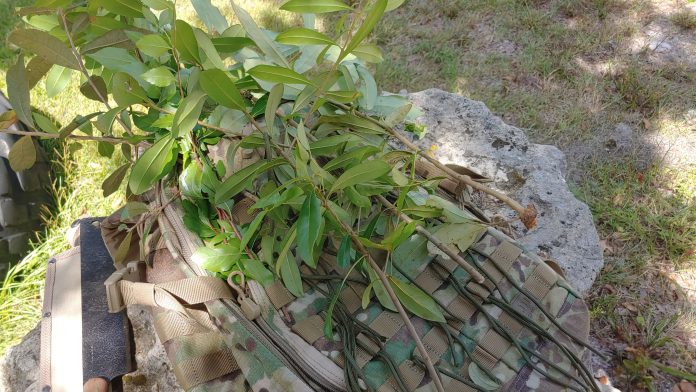
A while back, I wrote an article called Reject Operating, Embrace Soldiering and since then, I’ve become fascinated with those old-school fieldcraft skills. I always enjoyed this part of Marine Corps training, but admittedly it was often put on the back burner compared to the skills needed to deal with IEDs, clearing rooms, and other common GWOT infantry tasks. Today we are going to talk about a very important skill to have, and that’s camouflaging. Specifically, we want to talk about how to camouflage your pack.
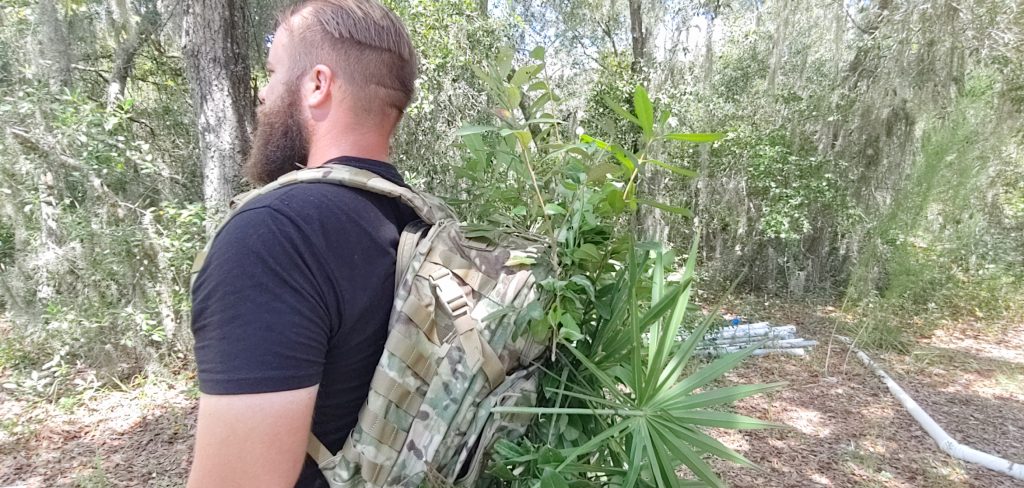
Unlike most of your gear, your pack can be easily camouflaged without disrupting its intended use. Your pack is also one of those items that might not be carried at all times and might be something left behind. When it’s day 105 of being a Wolverine fighting the Russians, your sustainment pack might stay home. A mess of packs sitting around is an easy way for your enemy to know where you bed down, your numbers, equipment, and all sorts of valuable information.
Let’s prevent that by applying a little camouflage.
Hasty and Deliberate
There are two methods to camouflage your pack. One is hasty and adaptable to your environment and utilizes minimal preparation. The second is a deliberate, planned method of camouflage that requires a fair bit of preparation. Hasty is a temporary measure that will require a constant update. Deliberate has the benefits of lasting longer but being less adaptable to environments.
Let’s break down both methods.
The Hasty Camouflage Method
Hasty camouflage can be as simple as decorating your pack with some local vegetation, but we aim to be a little more precise than that. The preparation for hasty camouflage is simple and relies on a little bit of 550 cord. Today you meet the tie-tie. A tie-tie is a piece of 550 cord tied to your pack designed to hold local vegetation to effectively camouflage the pack.
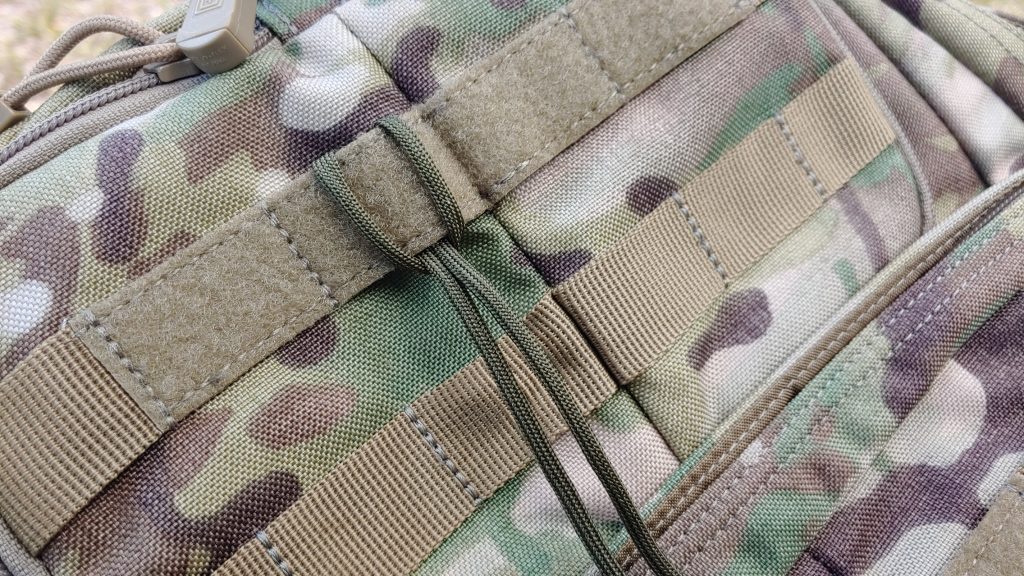
Tie-ties range in length between 8 and 14 inches. You then use a clove hitch to secure these tie-ties to your pack. They wrap around MOLLE nickels and hang down to provide various points for tying on vegetation to help camouflage your pack.
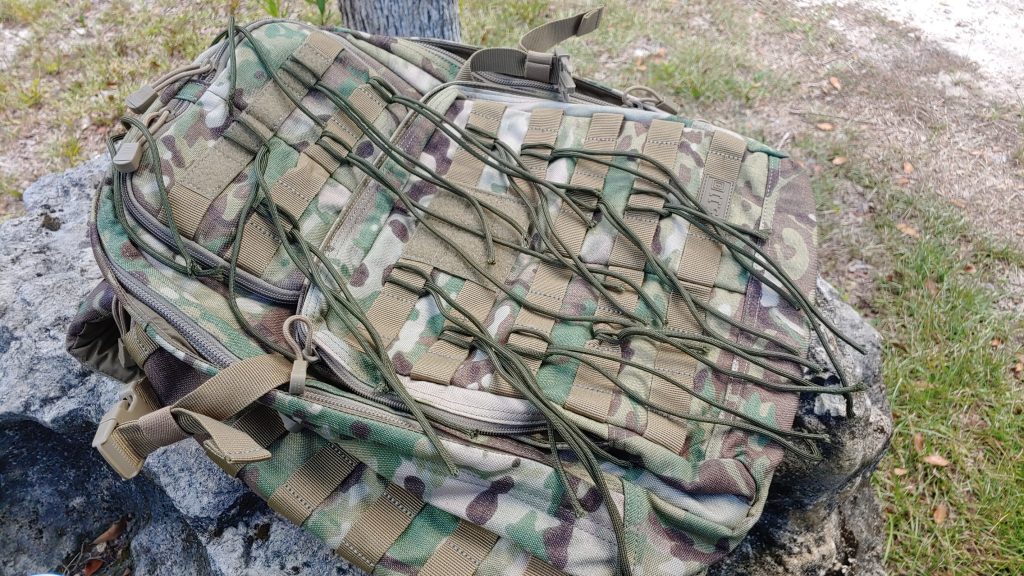
As you move to a new area, you need to examine the local vegetation and what’s common. This will allow you to smartly camouflage your pack. Don’t gather all of your material from one area. A big gap in vegetation is obvious to observers. Gather the vegetation over a wide area and avoid hacking like a madman with a machete.
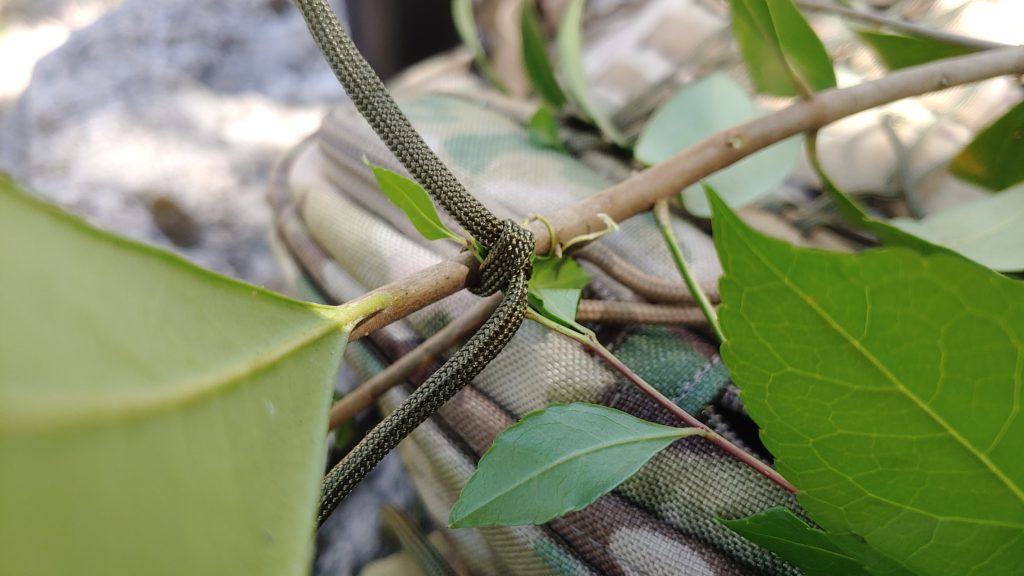
Tie this vegetation to your pack and ensure it blends in well with the environment, and you’re good to go. Remember, this vegetation will die and wither, so it needs to be changed out regularly. Dispose of your old vegetation correctly and scatter it rather than just dump it in a pile.
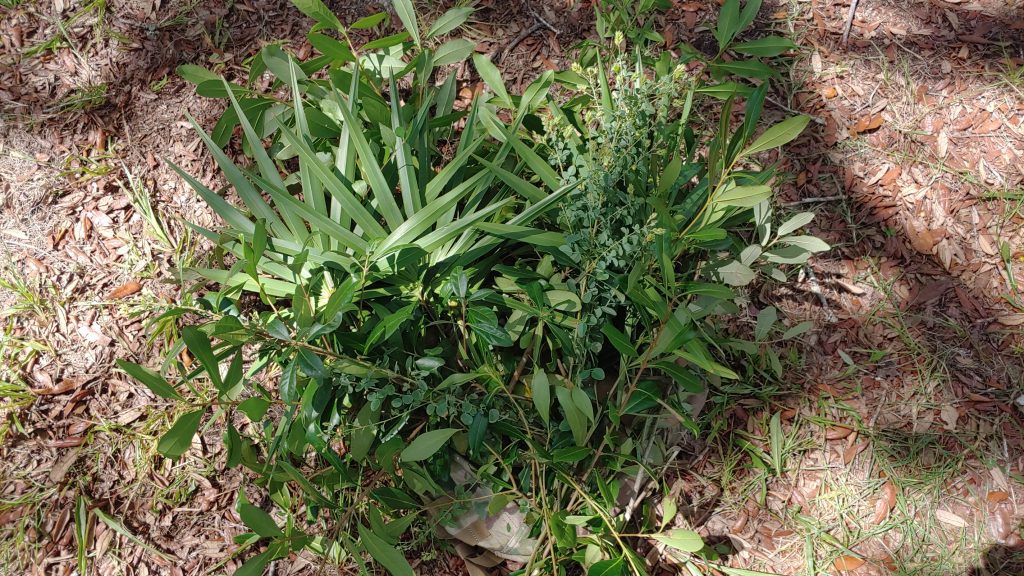
Deliberate Camouflage
Deliberate camouflage involves a bit more preparation. This method does not rely on native materials but can be supplemented by them. Good camouflage goes a long way, and a little prep makes it a bit easier to blend in.
You can use additional materials like camouflage netting or burlap and juke to create artificial camouflage. A ghillie blanket or similar item takes time and effort to prepare. While not difficult, it is time-consuming. Construction requires patience, lots of typing, and dying the material to match the environment around you. Cami netting is often an easier method, but a ghillie-style camouflage is more adaptable to individual environments.
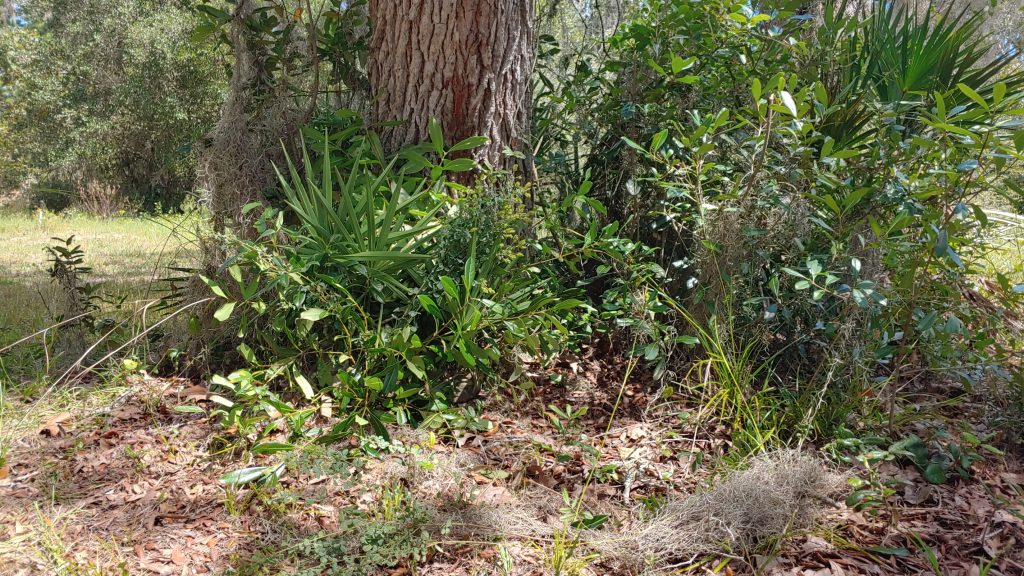
While not absolutely necessary, you can toss on some natural vegetation to help break up the shape and supplement the natural look to the pack.
Keeping Camouflage
Camouflage is an art form. Learning how to properly hide yourself and your gear can be lifesaving ultimately and help you and your gear stay hidden. It’s a skill you have to practice to learn, and admittedly I’m out of practice. However, it’s a fairly cheap skill to invest your time in, and with the cost of ammo, it’s a good time to work on your soft skills.



